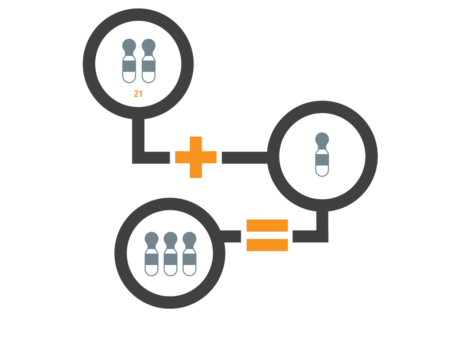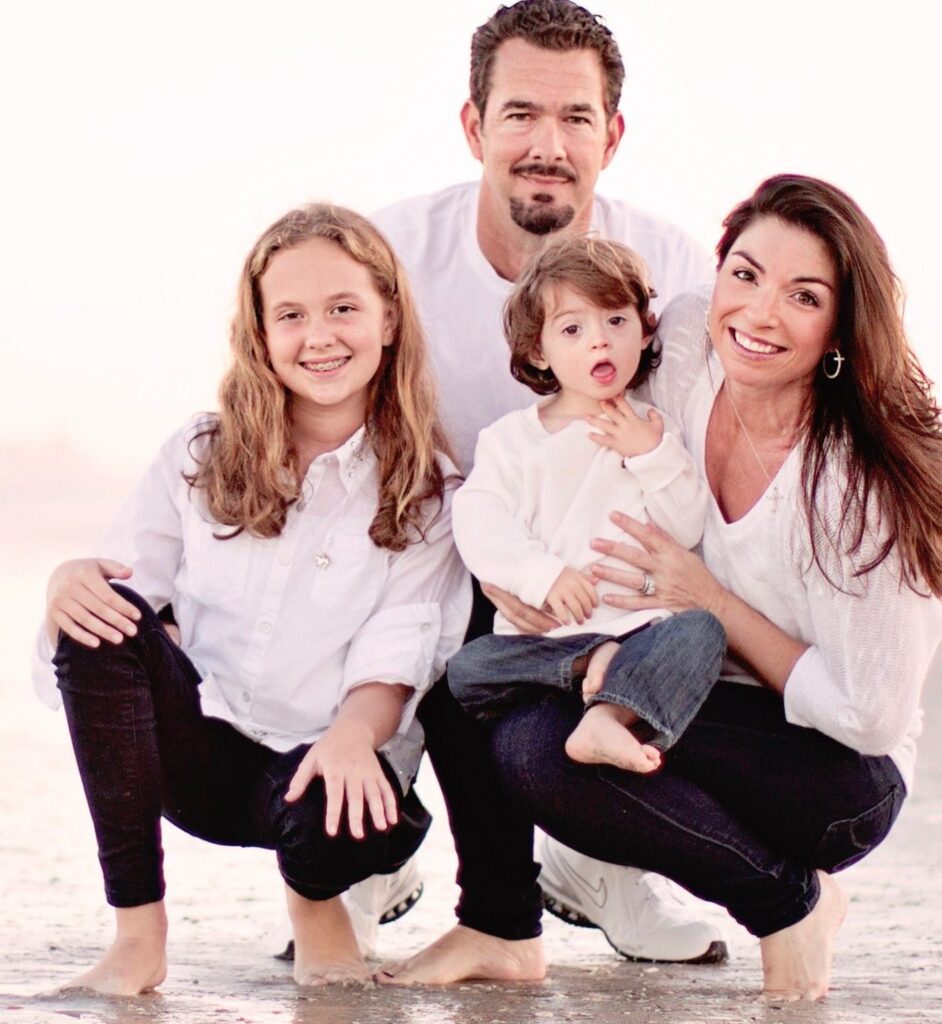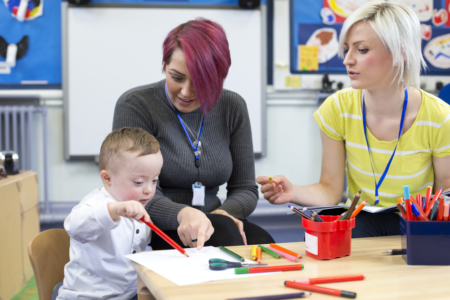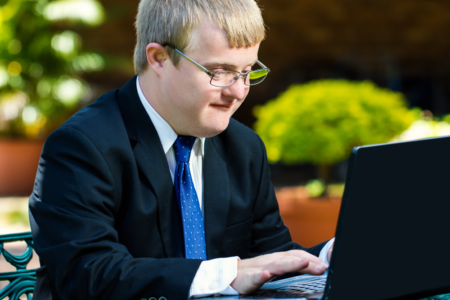What We Know
Down syndrome is the result of an extra copy of genetic material on all or part of the 21st chromosome. Health and developmental challenges occur in varying degrees to individuals living with Down syndrome.

Trisomy 21—the cause of 95% of cases—occurs when there are three copies of the 21st chromosome, instead of two. This genetic condition, which occurs at conception, is more prevalent among older mothers.
Mosaic Down syndrome results when some cells in the body are normal, while others have Trisomy 21.
Robertsonian translocation occurs when part of chromosome 21 breaks off during cell division and attaches to another chromosome, usually chromosome 14. This translocation causes some Down syndrome characteristics.
What We Know
Medical advances and improved resources for family support have dramatically improved outcomes for babies born with Down syndrome. Ongoing research is aimed at improving quality of life by targeting health and developmental challenges.

Talented and determined.

Loving and loyal family and friends.
Most conditions related to Down syndrome are well understood, and treatments are available. In people with Down syndrome the treatment of Alzheimer’s and of the root cause of intellectual disability are two of the biggest remaining frontiers to achieving improved independence. There is good news — we believe that researchers are on the cusp of major scientific advances and translational treatments for both of these conditions.
Three pillars of success for individuals with Down syndrome
Early intervention, meaningful inclusion, and medical advances are fundamental to their successes. With that, many achieve some form of independent living combined with supports for home economics, job coaching, and living companions. In addition, research has the potential to be a game changer to the futures of all those with living Ds. Drugs and other interventions targeted at the root cause may help them achieve increased independence, such as self-agency, manage a home budget, perform critical thinking, drive, live on their own, and have broader career options.
Early intervention and medical advances are the first step in helping your loved one with Down syndrome make the most of his or her development. This includes early screening, medical interventions and supervision, and early childhood developmental support with physical, speech, and occupational therapies.

Nursery teacher sitting with a parent and her son in the classroom. They are discussing the little boy’s progress.
Meaningful inclusion has been associated with improved language and literacy. Research has demonstrated substantial benefits of meaningfully inclusive educational settings, particularly in the areas of expressive language and literacy skills. In addition, included students with intellectual disabilities were nearly twice as likely as their non-included peers to enroll in some form of post-secondary education.

Ella Grace in Spokane Valley, WA learns and participates alongside her peers in public school.
LUMIND RDS CRITICAL RESEARCH
Research is the key to future independence. Translational research today is focused on the root cause of Down syndrome and “translates” scientific findings into improved health and independence. LuMind RDS is focused on four scientific research categories to develop drugs and interventions that target the conditions associated with Down syndrome from multiple angles, at the root cause.

